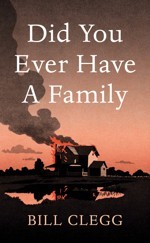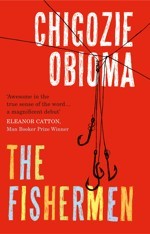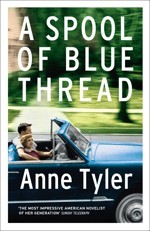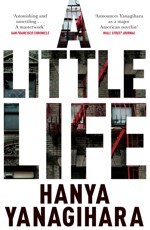Atlantic Monthly Contributors's Blog, page 380
July 30, 2015
White Flight Never Ended

Nearly 50 years ago, after a string of race-related riots in cities across America, President Lyndon B. Johnson commissioned a panel of civic leaders to investigate the underlying causes of racial tension in the country.
The result was the Kerner Report, a document that castigated white society for fleeing to suburbs, where they excluded blacks from employment, housing, and educational opportunities. The report’s famous conclusion: “Our nation is moving toward two societies, one black, one white—separate and unequal.”
Much of America would like to believe the nation has changed since then. The election of a black President was said to usher in a “post-racial era.” Cheerios commercials now feature interracial couples. As both suburbs and cities grew more diverse, more than one academic study trumpeted the end of segregation in American neighborhoods.
But now, a new report calls into question that much-vaunted progress. In a study published Thursday in the August issue of American Sociological Review, a trio of academics looks into the data and finds that segregation is actually becoming more pronounced in many American neighborhoods. The practices derided by the Kerner Commission, including white flight, exclusionary zoning, and outright prejudice, are continuing to create black areas and white areas, but this time around, those areas exist in both the cities and the suburbs.
“We’re more negative than other researchers who see declines in segregation,” Daniel Lichter, the lead author and a sociologist at Cornell, told me. “I have a hard time putting a positive spin on this research.”
Previous data has suggested that segregation between black and white populations is declining. But much of that research looked at entire metropolitan areas, and found more minorities in suburbs, which led researchers to conclude that the nation was no longer divided into black cities and white suburbs. Lichter and his colleagues looked at at smaller communities, and found that while black residents don’t just live in inner cities anymore, the suburbs they’ve moved to are majority black, while other suburbs are majority white.
More From Aging Pipes Are Poisoning America's Tap Water The Myth of New Orleans’s Affordability Why Women Shouldn't Have to Act Like Dudes at Work
Aging Pipes Are Poisoning America's Tap Water The Myth of New Orleans’s Affordability Why Women Shouldn't Have to Act Like Dudes at Work “Our substantive point is straightforward,” they write. “Segregation between places (e.g., city-suburb or suburb-suburb) may be increasing, even as overall metro-neighborhood segregation declines.”
In the 1960s, white families moved from cities to suburbs when they saw black neighbors move in next door. Now, they move from suburbs to farther-out fringe areas often not counted in academic studies “hunkering down in all-white neighborhoods, affluent gated communities, or unincorporated housing developments at the exurban fringe,” the researchers write.
And more white Americans, drawn by walkable neighborhoods or transit, are moving back into the inner cities that were once shunned. Young whites and baby boomers, for example, are moving to areas of central cities such as Washington, D.C., which was, for years, a majority-minority city. That, in turn, prices out minority residents.
Segregation isn’t just happening between black and white towns. Hispanic and Asian residents are segregated into their own cities and towns, too. Dover, New Jersey, for instance, a town 30 miles west of New York, was 70 percent Hispanic in the 2010 Census. In 1980, it was only 25 percent Hispanic.
These patterns of segregation are governed by housing practices on individual and municipal levels, like they were 50 years ago. Lenders and real estate agents still steer families to areas with populations of similar races, white families still flee areas with growing minority populations, and family and immigrant networks still attract groups of people similar to themselves.
Over time, communities become known as “black” or “white” or “Asian” or “Latino,” but local policy choices govern some of these categorizations. For example, in Ferguson, Missouri, the percentage of the population that was black increased to 67.4 percent from 25.1 percent between 1990 and 2010. The white population there dropped to 6,206 from 16,454 over the same time period. As whites started to leave, the local government began to allow for the construction of low- and mixed-income housing apartments. Investment firms bought out underwater mortgages and rented the homes to minorities.
 Ferguson, Missouri, gained black residents but became less diverse. (Jeff Roberson / AP)
Ferguson, Missouri, gained black residents but became less diverse. (Jeff Roberson / AP) “Ferguson became recognized as a ‘black suburb’ that could be distinguished from other nearby suburban communities that made different zoning and administrative decisions,” the authors write.
On the flip side, white communities make decisions that keep minorities out. Exclusionary zoning laws make it difficult to build mixed-income housing or apartment buildings in some towns, despite court cases seeking to make cities more diverse. These housing policies mean that cities compete for different types of people, and by banning apartment buildings or affordable housing, cities can better attract affluent white taxpayers.
Black-white segregation accounted for much of the divide between different communities, but whites seem more amenable to Asian or Hispanic families moving into their neighborhoods, researchers found.
Hispanic-white and Asian-white segregation in metropolitan areas has remained virtually unchanged between 1990 and 2010, while black-white segregation has declined in metropolitan areas. But segregation between suburban places has increased for blacks and whites, Hispanics and whites, and Asians and whites during that period.
“People know what is a white suburb and what is a black suburb,” Lichter says. “Whites are still attracted to those suburbs that are white.”
The study takes on added importance in the wake of a Supreme Court decision that upheld parts of the Fair Housing Act that could help bring further legal challenges to discriminatory practices. A few weeks later, the Obama Administration announced an overhaul of how the federal government distributes housing money. The new rules will require metropolitan areas to use data to measure segregation, and then take steps to address it, at least if they want to receive money from the federal government.
Such new policies could be a start to addressing this new version of an old problem. Even if they do, though, it was a divide that the country had hoped to solve half a century ago.
“Equality cannot be achieved under conditions of nearly complete separation,” the 50-year-old Kerner report concluded. “The primary goal must be a single society, in which every citizen will be free to live and work according to his capabilities and desires, not his color.”








A Prosecutor on the Killer Cop He Indicted: ‘This Should Not Happen, Ever’

On Wednesday, as officials in Hamilton County, Ohio, released video footage of University of Cincinnati Police Officer Ray Tensing shooting unarmed motorist Samuel DuBose in the head during a traffic stop, prosecutor Joe Deters conducted himself as professionally and appropriately as any prosecutor I’ve ever seen in a similar situation.
The 30-year veteran, who announced that officer Tensing was being indicted for murder, took immediate care to affirmatively state that the victim in the case was not responsible for his fate. “This is the most asinine act I’ve ever seen a police officer make,” he told reporters. “People want to believe that Mr. DuBose had done something violent toward the officer; he did not. He did not at all. And I feel so sorry for his family and what they lost. And I feel sorry for the community, too.”
The balance of the press conference shows an official forthrightly disseminating difficult facts, explaining to the press exactly why he temporarily suppressed video evidence, fielding questions, expressing upset at a crime perpetrated by an agent of the state, offering words of comfort to the family, and urging calm in the community. And it suggests a prosecutor who gave no special treatment to the policeman.
“What’s the message to the community or to other police officers?” one reporter asked.
“Look,” the prosecutor answered, “we’re gonna follow the law in this office and we are going, if the facts fit the law, we’re gonna pursue that no matter if you’re a police officer or you’re Pope Francis, I don’t care who you are, we’re gonna go after you.”
“If you’re a police officer or you’re Pope Francis, I don’t care who you are, we’re gonna go after you.”More strikingly, he spoke about the case just as he would about a non-cop indicted for murder. “Purposeful killing of another, that’s what makes it murder,” he said. “He purposefully killed him.” Here’s a longer illustrative exchange with a reporter:
Deters: If we think something is awry, we go after it. A warrant for his arrest has gone out and hopefully they’ll pick him up soon.
Q: ... Have you discussed is he going to turn himself in at a scheduled time? Have you talked to his attorney about it?
Deters: I’m treating him like a murderer.
Q: Is he in custody right now?
Deters: They’re out to get him. We asked his lawyer to turn him in if he wants, but we’re going to arrest him.
Q: As we speak?
Deters: Yes.
And here’s another important exchange about the moment when the motorist, asked to produce his license, took his foot off the brake and the car lurched slowly forward:
Q: What should the officer have done in this case? You said he reacted moments before the car slowly rolled away and the officer fired. What should he have done?
Deters: He wasn’t dealing with someone who was wanted for murder, he was dealing with someone who didn’t have a front license plate. I mean, this is—in the vernacular—a pretty chicken-crap stop, alright? And I could use harsher words. But, nonetheless, if he’s starting to roll away, just—seriously—let him go, you don’t have to shoot him in the head. And that’s what happened.
Later in the press conference, the prosecutor volunteered that future tragedies might be averted, in his view, if Cincinnati police officers rather than University of Cincinnati cops policed areas near campus, and that he’d already advised local leaders to make the change. I have no idea whether his assessment is correct, but it is heartening to see any member of the criminal-justice system going above and beyond his immediate duties to suggest reforms that might prevent future injustices.
A final notable moment of forthrightness came when a reporter asked about the utility of video footage in the case, and Deters acknowledged that if he were dealing with the officer’s verbal account of what happened rather than video evidence, there probably wouldn’t have been any murder indictment or arrest in the first place. That brings us to the one aspect of a stellar performance that warrants criticism.
“The policemen I know and the investigators I work with everyday, this situation would have never have escalated like this … I feel so sorry for his family and what they lost. And I feel sorry for the community, too,” Deters said. “Because we’ve worked so hard to develop great police relationships with the community and to have this type of a senseless act take place in Cincinnati. This doesn’t happen in the United States. This might happen in Afghanistan or somewhere ... This just does not happen in the United States. People don’t just get shot for a traffic stop unless they are violent toward the police officer. And he wasn’t. You’re gonna see it.”
I cannot speak to the overall quality of policing in Cincinnati. But it just isn’t true that “this doesn’t happen in the United States.” We know it happens because we’ve seen it before.
The prosecutor is surely familiar with the North Charleston police officer who shot and killed Walter Scott during a traffic stop just a few months ago, making national headlines:
He may not have seen, but should review, footage of a 70-year-old man shot during a traffic stop when a highway patrolman mistook his cane for a firearm of some sort:
As well, he should watch police officers in New Mexico firing at a minivan full of kids:
And the man at a Columbia, South Carolina, gas station shot by a police officer as he attempted to produce his driver’s license:
These incidents happen more frequently than is captured on video. And they raise the question of how many videos of this sort must emerge before conscientious prosecutors begin to accept what many Americans only started believing in the YouTube era: that while this sort of thing mostly doesn’t happen in England or Denmark or Spain, it happens with alarming frequency in the United States. The present case almost certainly would’ve turned out differently but for the existence of video. And that should make Deters more cautious in the future about presuming that the version of events given by police officers is the truth.









The Tricky Politics of Educating Prisoners

Ask any advocate—liberal or conservative—of criminal-justice reform for the best way to shrink the nation's overcrowded prisons, and one of the first answers you’ll likely hear is this: Keep the inmates currently in jail from coming back once they get out.
Helping prisoners prepare for re-entry into the real world by providing them education and job-training while they’re still behind bars, the argument goes, gives them a better shot at finding jobs, and makes them less likely to return to criminal activity and wind up back in prison.
There’s a broad consensus on that point. But when the conversation turns to actually paying for such programs, the left-right coalition pushing for a major prison overhaul begins to fray. On Friday, the Obama administration will announce that for the first time since the tough-on-crime era of the early 1990s, federal funding for Pell grants will be made available for prisoners to take college courses. The political reaction to the move could give a strong indication of just how realistic the current push for new criminal-justice legislation is in Congress.
At a time when college is out-of-reach for so many working families, will the public support the use of taxpayer funds to educate criminals?
Related Story
The Moment for Criminal-Justice Reform?
“That’s been the argument all the way along,” said Stephen Steuer, executive director of the Correctional Education Association. Steuer and other supporters of prisoner education point to a 2013 Rand Corporation study finding that for every dollar spent on such programs, “you get $5 back in terms of reduced incarceration costs.” A Department of Education official, speaking on the condition of anonymity to preview Friday's announcement, cited the same Rand report, which found that prisoners who participated in correctional education programs were 43 percent less likely to return to prison within three years.
To a large degree, the array of conservative groups that are supporting criminal-justice reform—including the Koch brothers, FreedomWorks, and Grover Norquist’s Americans for Tax Reform—are united behind a pair of priorities: reducing the exorbitant government cost of incarcerating so many people, and reducing the sheer number of crimes for which people can be imprisoned. That’s not to say that many conservatives aren’t focused on the racial inequities in the system, or the moral failings of a society that tears so many families apart for minor crimes, but the reducing the costs of the system remains a top concern.
“There’s so much to be done that people who are talking about spending more money really need to get to the end of the list.”“There’s so much to be done that people who are talking about spending more money really need to get to the end of the list,” Norquist told me. “Because if you’re talking about reducing mandatory minimums, that doesn’t cost money. That saves money. If you’re talking about reducing the 4,000 federal laws and the several hundred thousand regulations that can send you to prison if you fill out the paperwork wrong, that doesn’t cost a penny.”
“Asking for more money up front is a distraction from what can be accomplished,” Norquist said.
The Obama administration is characterizing the Pell grant initiative, which was first reported Tuesday by the Wall Street Journal, as a "limited pilot program” that it is permitted to launch under a provision of the Higher Education Act. The administration won’t say how much it will cost, or whether the funds will in any way limit the Pell grants available to low-income families outside the prison system. Other important details are also unknown, Steuer said, such as how many inmates would be eligible whether people convicted of certain crimes would be excluded.
Congress banned inmates from getting Pell grants in 1994, and there’s already concern among conservatives that the administration is acting unilaterally rather than waiting for approval from Capitol Hill. “President Obama, through administrative actions, is risking conservative support for justice reform,” said Jason Pye, the justice director for FreedomWorks, the D.C.-based conservative advocacy group. “To avoid any controversy, as well as undermine prospects for reform this year, the administration should go through Congress to lift the ban on Pell grants.” A group of Democrats in the House has already introduced a bill to restore Pell grants for prisoners permanently, and many liberal lawmakers want criminal-justice legislation to include an infusion of funds for urban programs aimed at keeping teenagers out of jail in the first place.
Importantly, Pye did not object to the policy change as much as the process. “Education, work training and other rehabilitative programs implemented for eligible nonviolent offenders will have an upfront cost, but the reductions in recidivism could save taxpayers a lot of money,” he wrote in an email. He pointed to the example of Texas, which saved $2 billion by scrapping plans to build new prisons and used some of the money to boost spending on probation and other programs.
As far as restoring Pell grants for prisoners, increased access to education would play a crucial role in reducing a prisoner's of risk recidivist behavior. But policymakers could head off the cycle of crime and poverty before it starts through other reforms, such as providing parents more choice in their child's education.
Norquist also praised the Texas example, but he said a restoration of Pell grants would have limited value if it were not paired with other reforms, like a relaxation of regulations and union rules that prevent convicted felons from getting licenses in many fields once they get out of prison. “I don’t care how much Pell grant education you’ve got if you can’t get a job because you don’t have a license, and you cant get a license because they say that felons can’t get a license,” Norquist said. “What was all the Pell money for?”
Conservatives seem willing to accept some new spending if they can be convinced that it will be outweighed by savings in the longterm. Starting Friday, it will be up to the Obama administration to make the case that giving Pell grants to prisoners adheres to that principle.









How One Campus Cop Undid a City's Police Reforms

During a news conference Wednesday, discussing the killing of Samuel DuBose, Hamilton County, Ohio, prosecutor Joe Deters said several remarkable things.
“This is without question a murder,” he said, adding that Ray Tensing, who killed Dubose—an unarmed black man pulled over for a missing front license plate—“should never have been a police officer.” Deters said, “This is the most asinine act I’ve ever seen a police officer make.”
Amid a string of cases where police have killed black men, what makes this case different, as Robinson Meyer notes, is body-cam footage that captured the incident, and helped bring about Tensing’s indictment for murder. But the case is also interesting because Tensing wasn't a Cincinnati police officer. He was employed by the police department of the University of Cincinnati—a fact the prosecutor lamented.
“I just don’t think a university should be in a policing business,” Deters said. “I just don’t.”
Related Story
Body-Camera Footage Gets an Officer Indicted for Murder
The United States faces nationwide problems in policing, but the solutions so far have often taken the form of federal intervention in local police departments on a case-by-case basis: a civil-rights investigation in Ferguson, Missouri; a consent decree in Cleveland; and so on. This piecemeal approach risks producing only piecemeal results—there are, after all, around 18,000 police departments nationwide at last count—and worse, what fixes one department may not fix its neighbor.
That’s a story that Cincinnati can tell with tragic eloquence. The city has been hailed as one of the success stories of police reform in this century. In 2001, race riots erupted in the Over-the-Rhine neighborhood, just a stone’s (or bottle’s) throw from downtown. Tensions between police and black residents were already high when an officer shot and killed a 19-year-old black man, touching off the rioting. In the years since, as Alana Semuels detailed in May, Cincinnati has worked to fix its broken department and repair relations in the community. It has deployed a technique called community problem-oriented policing, which prioritizes fixing underlying problems over arresting people and hauling them in. Cincinnati Chief of Police Jeffrey Blackwell, who is black, attended DuBose’s funeral and offered his condolences—a sign of the department’s outreach.
None of that helped save DuBose’s life, though, since Tensing was an officer with the University of Cincinnati police. It’s a much smaller department, with just 72 officers. And, it’s not even the only campus department in the city—Xavier University has one, too.
What fixes one department may not fix its neighbor.Data on campus police departments is even less comprehensive than on municipal police. Much of the academic literature over recent decades focuses on the ability of campus police to ensure law and order, rather than the extent to which they are subject to it. That’s a mirror of the broader police landscape, where researchers, reporters, and reformers alike have been frustrated by the lack of good data on questions like police violence.
Here’s some of what is known: There are more than 800 campus police departments around the country as of last count. The Bureau of Justice Statistics reported that as of 2005, starting salaries for campus police were lower than for officers in municipal departments. Campus departments also have a reputation among cops for being boring—they’re small and tend to cover small areas, there’s less crime, and the issues they’re dealing with are often minor cases like speeding on campus roads or underage drinking. (This police forum provides some examples of this complaint.) Of course, this means that campus police may be less experienced and less prepared for higher-pressure encounters. In December 2013, Cameron Redus, a student at San Antonio’s University of the Incarnate Word was shot by an officer under questionable circumstances. There’s been a robust debate over whether campus police officers ought to be armed like their municipal counterparts.
There’s a persuasive argument for the existence of campus police: They’re patrolling places full of young people who may raise hell but aren’t serious threats to public order, and the slate of crimes they handle are different from what municipal police tend to address.
Problems crop up where cities and towns closely abut campuses. Go to any place with fraught or even occasionally tense town-gown relations and you can find stories of townies—and often, though not exclusively black ones—being hassled simply for being on or near campus areas where they have every right to be. (Similarly common are stories of campus police hassling black students whom they take to be interlopers.) Many campus police departments also have jurisdiction off campus, often by means of agreements with local departments. The North Dakota Supreme Court recently invalidated such agreements in that state.
Campus police are just a part of a bigger system, though. In addition to local police, the nation has thousands of other law-enforcement agencies: nearly 2,000 “special-jurisdiction agencies” like campus police departments; state police forces; sheriff’s departments; and several hundred more that don’t fit any of those categories. In a highly publicized case in March, a student at the University of Virginia was beaten near campus by Virginia Alcoholic Beverage Control officers for allegedly using a fake ID. All charges against him were later dropped. Together, these departments make up an important piece of the law-enforcement landscape, and one that poses particular challenges.
DuBose’s death will likely prompt a reassessment of the role of campus police, whether most universities ought to have their own forces, and what those forces should look like. It might also encourage a more important, broader conversation among police reformers about the ways that interlocking departments and jurisdictions demand interlocking solutions.
In preparation for Wednesday's news conference, the University of Cincinnati canceled classes and prepared for possible riots—probably remembering what happened 14 years ago. If Cincinnati can solve its police problem, but one rogue officer on a tiny force within the city can bring it back to the brink of riots, it suggests a more systemic overhaul is needed.









The Problem With Piecemeal Police Reforms

During a news conference Wednesday, discussing the killing of Samuel DuBose, Hamilton County, Ohio, prosecutor Joe Deters said several remarkable things.
“This is without question a murder,” he said, adding that Ray Tensing, who killed Dubose—an unarmed black man pulled over for a missing front license plate—“should never have been a police officer.” Deters said, “This is the most asinine act I’ve ever seen a police officer make.”
Amid a string of cases where police have killed black men, what makes this case different, as Robinson Meyer notes, is body-cam footage that captured the incident, and helped bring about Tensing’s indictment for murder. But the case is also interesting because Tensing wasn't a Cincinnati police officer. He was employed by the police department of the University of Cincinnati—a fact the prosecutor lamented.
“I just don’t think a university should be in a policing business,” Deters said. “I just don’t.”
Related Story
Body-Camera Footage Gets an Officer Indicted for Murder
The United States faces nationwide problems in policing, but the solutions so far have often taken the form of federal intervention in local police departments on a case-by-case basis: a civil-rights investigation in Ferguson, Missouri; a consent decree in Cleveland; and so on. This piecemeal approach risks producing only piecemeal results—there are, after all, around 18,000 police departments nationwide at last count—and worse, what fixes one department may not fix its neighbor.
That’s a story that Cincinnati can tell with tragic eloquence. The city has been hailed as one of the success stories of police reform in this century. In 2001, race riots erupted in the Over-the-Rhine neighborhood, just a stone’s (or bottle’s) throw from downtown. Tensions between police and black residents were already high when an officer shot and killed a 19-year-old black man, touching off the rioting. In the years since, as Alana Semuels detailed in May, Cincinnati has worked to fix its broken department and repair relations in the community. It has deployed a technique called community problem-oriented policing, which prioritizes fixing underlying problems over arresting people and hauling them in. Cincinnati Chief of Police Jeffrey Blackwell, who is black, attended DuBose’s funeral and offered his condolences—a sign of the department’s outreach.
None of that helped save DuBose’s life, though, since Tensing was an officer with the University of Cincinnati police. It’s a much smaller department, with just 72 officers. And, it’s not even the only campus department in the city—Xavier University has one, too.
Data on campus police departments is even less comprehensive than on municipal police. Much of the academic literature over recent decades focuses on the ability of campus police to ensure law and order, rather than the extent to which they are subject to it. That’s a mirror of the broader police landscape, where researchers, reporters, and reformers alike have been frustrated by the lack of good data on questions like police violence.
Here’s some of what is known: There are more than 800 campus police departments around the country as of last count. The Bureau of Justice Statistics reported that as of 2005, starting salaries for campus police were lower than for officers in municipal departments. Campus departments also have a reputation among cops for being boring—they’re small and tend to cover small areas, there’s less crime, and the issues they’re dealing with are often minor cases like speeding on campus roads or underage drinking. (This police forum provides some examples of this complaint.) Of course, this means that campus police may be less experienced and less prepared for higher-pressure encounters. In December 2013, Cameron Redus, a student at San Antonio’s University of the Incarnate Word was shot by an officer under questionable circumstances. There’s been a robust debate over whether campus police officers ought to be armed like their municipal counterparts.
There’s a persuasive argument for the existence of campus police: They’re patrolling places full of young people who may raise hell but aren’t serious threats to public order, and the slate of crimes they handle are different from what municipal police tend to address.
Problems crop up where cities and towns closely abut campuses. Go to any place with fraught or even occasionally tense town-gown relations and you can find stories of townies—and often, though not exclusively black ones—being hassled simply for being on or near campus areas where they have every right to be. (Similarly common are stories of campus police hassling black students whom they take to be interlopers.) Many campus police departments also have jurisdiction off campus, often by means of agreements with local departments. The North Dakota Supreme Court recently invalidated such agreements in that state.
Campus police are just a part of a bigger system, though. In addition to local police, the nation has thousands of other law-enforcement agencies: nearly 2,000 “special-jurisdiction agencies” like campus police departments; state police forces; sheriff’s departments; and several hundred more that don’t fit any of those categories. In a highly publicized case in March, a student at the University of Virginia was beaten near campus by Virginia Alcoholic Beverage Control officers for allegedly using a fake ID. All charges against him were later dropped. Together, these departments make up an important piece of the law-enforcement landscape, and one that poses particular challenges.
DuBose’s death will likely prompt a reassessment of the role of campus police, whether most universities ought to have their own forces, and what those forces should look like. It might also encourage a more important, broader conversation among police reformers about the ways that interlocking departments and jurisdictions demand interlocking solutions.
In preparation for Wednesday's news conference, the University of Cincinnati canceled classes and prepared for possible riots—probably remembering what happened 14 years ago. If Cincinnati can solve its police problem, but one rogue officer on a tiny force within the city can bring it back to the brink of riots, it suggests a more systemic overhaul is needed.









July 29, 2015
Inside the 2015 Man Booker Longlist

The longlist for the Man Booker Prize, one of the most prestigious literary awards was announced Wednesday. For the second year, the prize was open to writers of any nationality who publish books in English in the U.K., and this year five American writers made the list of 13 contenders, chosen by five judges from a pool of 156 total works.
Related Story
Of Course the Booker Prize Should Get More Inclusive—Because English Has
The U.S. is, in fact, the most well-represented country, with other entrants hailing from Great Britain, Jamaica, New Zealand, Nigeria, Ireland, and India. There are three debut novelists and one former winner on the list, and women writers outnumber men seven to six. From dystopian and political novels to a multitude of iterations on the family drama, the selections capture the ever-changing human experience in very different ways.
From here, the selections will be whittled down to a shortlist of six books, to be announced on September 15. The winner will be announced at the ceremony in London on October 13. Until then, here’s a guide to the 13 works on the longlist.
Bill Clegg, Did You Ever Have a Family

The American writer’s novel about a woman struggling with the aftermath of an explosion that killed her family inspired a new literary fiction imprint at Simon & Schuster. The tragedy, which takes multiple perspectives over many years, is Clegg’s first work of fiction, but he’s a longtime figure in the publishing world and has written two memoirs, one in 2011 about his addiction to crack cocaine (Portrait of an Addict as a Young Man) and one a year later about his experiences in rehab (Ninety Days). Kirkus Reviews called the novel “an attempt to map how the unbearable is borne, elegantly written and bravely imagined.”
Anne Enright, The Green Road

The Irish novelist and former winner’s latest book is a family drama that jumps through time, following four siblings as they grow up, leave their home in County Clare, and come back decades later to spend Christmas with their “monstrously manipulative and self-pitying” mother. James Wood at The New Yorker describes the book as a “more conventional novel than anything Enright has written,” with the author understanding adulthood “as a kind of aberration that befalls families: siblings must grow up, but their maturity is oddly irrelevant to the atavism of the family unit.”
Marlon James, A Brief History of Seven Killings

Michiko Kakutani at The New York Times describes the Jamaican author’s novel as being “like a Tarantino remake of ‘The Harder They Come’ but with a soundtrack by Bob Marley and a script by Oliver Stone and William Faulkner, with maybe a little creative boost from some primo ganja.” Tackling subjects like Jamaican politics and poverty, race and class, and the complicated relationship between the U.S. and the Caribbean by using the 1976 assassination attempt on Marley as a jumping off point, the cacophonous novel is “sweeping, mythic, over-the-top, colossal and dizzyingly complex.”
Laila Lalami, The Moor’s Account

In her third novel, the Moroccan American author Lalami retells a famous account of the disaster that struck a Spanish conquistador setting sail for the New World in the 16th century from the perspective of a slave. Even though the fictional memoir is more stately and slow-moving than other fast-paced adventure tales, NPR’s Alan Cheuse finds it “richly rewarding” and “a huge step up from the writer’s first two works of fiction.” By reconstructing an erased historical perspective, Lalami’s storytelling fights “a primal struggle over power between the strong and the weak, between good and evil, and against forgetting,” writes Jeffery Renard Allen for The New York Times. “Lalami sees the story as a form of moral and spiritual instruction that can lead to transcendence.”
Tom McCarthy, Satin Island

In February, Marc Mewshaw wrote in The Atlantic, “Through an accumulation of piercing observations, idle ruminations, and a dense system of symbols, Satin Island crystallizes into a magisterial ethnographic portrait of our overstimulated, interconnected, simulacra-addicted times.” His take on the fourth novel by McCarthy, a Brit, which follows a corporate anthropologist’s failure to complete a comprehensive study of “the tribe otherwise known as mankind, circa 2015,” is that the reading experience corresponds to the protagonist’s troubled task of piecing together a complete picture of our age. “Satin Island hovers between the alien and the familiar, packaging experimental literature in a candy coating of easily digestible (and often slyly funny) narrative,” he writes. “Nevertheless, it retains, thanks to the self-referential enigma of its symbols, a certain inexhaustibility.”
Chigozie Obioma, The Fishermen

In a compelling debut novel that combines the traditional English novel form with the Nigerian oral storytelling tradition, Obioma writes about four brothers who find out that the local prophesier has predicted that the eldest brother will be killed by one of his siblings. The political history of Nigeria provides the backdrop for this mix between family narrative and Bildungsroman. As Helon Habila writes in The Guardian, “The Fishermen is an elegy to lost promise, to a golden age squandered, and yet it remains hopeful about the redemptive possibilities of a new generation.”
Andrew O’Hagan, The Illuminations

The British writer’s fifth novel explores the close connection between the platoon leader of British infantry in Afghanistan and his grandmother, an elderly woman in Britain who is losing her mind to dementia. In The New York Times, Dani Shapiro describes the novel as “both a howl against the war in Afghanistan and the societies that have blindly abetted it, and a multilayered, deeply felt tale of family, loss, memory, art, loyalty, secrecy and forgiveness.” Rather than the rhetoric-spouting characters that often occupy war novels, O’Hagan gives his reader an intimate and precise portrait of mental disintegration and the desire to forget.
Marilynne Robinson, Lila

Lila occupies the same small-town world of Robinson’s previous novels Gilead (2004) and Home (2008), and details the life of a minister’s second wife, from her childhood of neglect to the love, marriage, and pregnancy that unexpectedly stumble through her door. With the theme of loneliness at its heart, Robinson’s novel “resists the notion of love as an easy antidote to a lifetime of suffering or solitude, suggesting that intimacy can’t intrude on loneliness without some measure of pain,” writes Leslie Jamison in The Atlantic of the book. “Robinson’s determination to shed light on these complexities—the solitude that endures inside intimacy, the sorrow that persists beside joy—marks her as one of those rare writers genuinely committed to contradiction as an abiding state of consciousness.”
Anuradha Roy, Sleeping on Jupiter

The story of a young woman’s return to the temple town where she was abused and traumatized as a child, the Indian writer’s novel exposes “the endless, treacherous hypocrisies of Indian society” through viscerally evoked images and haunting atmosphere. Meen Kandasamy writes for The Guardian, “Roy has used the most potent weapon in a writer’s arsenal—the form of the novel, with its ability to simultaneously be universal and particular—to boldly unmask the hidden face of Indian spirituality and the rampant sexual abuse in its unholy confines.”
Sunjeev Sahota, The Year of the Runaways

The British writer’s second novel centers around three young Indian migrant workers whose lives are constrained by Indian society, which despite its modern aspirations, is still weighed down by bigotry. “Sahota is a writer who knows how to turn a phrase, how to light up a scene, how to make you stay up late at night to learn what happens next,” writes Kamila Shamsie in The Guardian. “This is a novel that takes on the largest questions and still shines in its smallest details,” successfully humanizing some of India’s most urgent political problems.
Anna Smaill, The Chimes

Smaill’s dystopian debut tells the story of a totalitarian regime that uses music to inflict amnesia on its subjects, with the plot crystallized through a young outlaw who has the ability to see others’ memories. The New Zealand poet manages to remain fresh and original in a genre with many distinguished precursors, but Smaill manages to poignantly convey her wider premise: “that a society must retain a diverse shared past if it is to have a cohesive future.”
Anne Tyler, A Spool of Blue Thread

The American writer takes as her subject four generations of a middle-class American family, with its upstarts, black sheep, and dysfunction, an everyman topic that could make A Spool of Blue Thread a cliché. However, as Rebecca Pepper Sinkler writes in The New York Times, “Tyler has a knack for turning sitcom situations into something far deeper and more moving. Her great gift is playing against the American dream, the dark side of which is the falsehood at its heart: that given hard work and good intentions, any family can attain the Norman Rockwell ideal of happiness—ordinary, homegrown happiness.”
Hanya Yanagihara, A Little Life

Garth Greenwell in The Atlantic has called the Hawaiian American writer Yanagihara’s novel, which follows four men over three decades of friendship, “the most ambitious chronicle of the social and emotional lives of gay men to have emerged for many years.” Yanagihara avoids the familiar narratives of gay fiction, such as the coming-out story or the AIDS novel, but maintains a strict attention to her characters’ inner lives, remaining in the queer-coded aesthetic tradition of melodrama, sentimental fiction, and grand opera. In doing so, she accesses “emotional truths denied more modest means of expression.”









Why Drake Replied

Once upon a time, Drake made a vow of silence. “Diss me, you'll never hear a reply for it,” he said on “Successful,” the 2009 song in which the Toronto rapper correctly predicted he’d soon be superwealthy. This week, Drake has broken his vow twice over, a fact about which he seems conflicted. “When I look back,” he says on the new track “Back to Back Freestyle,” “I might be mad that I gave this attention.”
Related Story
“This” is the beef started by the 28-year-old Philadelphia rapper Meek Mill, who recently tweeted accusations that Drake doesn’t write his own material. Depending on who you talk to or how you look at it, this is either a big deal or no deal at all. On Instagram, Lupe Fiasco had a good take: “Ghostwriting, or borrowing lines, or taking suggestions from the room has always been in rap and will always be in rap. It is nothing to go crazy over or be offended about unless you are someone who postures him or herself on the importance of authenticity and tries to portray that quality to your fans or the public at large. Then we might have a problem.”
Authenticity is, indeed, part of Drake’s shtick (as it is, in one way or another, for just about every major rapper these days). He’s famous for being frank about his feelings; one of his many, many catchphrases is “The real is on the rise.” On some level, fans may realize that popular rappers’ lyrics often result from collaboration, but Drake probably doesn’t want them thinking too hard about it. His hit 2015 mixtape If You’re Reading This, It’s Too Late, for example, portrayed his life as full of hard, lonely work: “I could never ever let the streets down / Haven't left the condo for a week now,” he rapped on “10 Bands,” which is one of the songs whose authorship has now been called into question—even though all along its credits listed Quentin Miller, the man that Meek Mill just named as Drake’s ghostwriter.
Mill’s questions are more damaging than, say, the comparisons to washing machines that Drake’s used to receiving.A certain aloofness has been part of Drake’s act, too. Prior to Mill’s outburst, Drake was already one of the most divisive people in rap, ridiculed for his sentimental songs, his background as a child actor, and, as of recently, his pants. His albums are filled with subtweet-like replies to the snickering; occasionally, he tosses off a line that’s unmistakably targeted toward a particular hater, but for the most part he has kept the backtalk vague.
So it’s remarkable that Mill has triggered a full-on assault from Drake. First came the song “Charged Up,” which included a few fairly gentle jabs at Mill but mostly made fun of the idea of people making fun of Drake; “I’m trying to take the high road,” he said. Mill replied by calling the song “baby lotion soft” and trolling the Internet with a response track that was just 15 seconds of screaming. Four days later, Drake returned with “Back to Back Freestyle,” faster paced and more vicious than what came before, painting Mill as a lightweight leeching off the success of his girlfriend, Nicki Minaj: “Is that a world tour or your girl's tour?”
Judging by the resulting memes and media coverage, a lot of people think that this round of battle, and perhaps the entire war, goes to Drake: When “Back to Back” was released, more than one person had the idea to change Mill’s Wikipedia entry to say that he had died. Mill may yet return with a powerful reply of his own, but already Drake’s accomplished two vital things. One: Assuming he didn’t use a ghostwriter for these songs—which would be very risky given the downside to being found out—he’s reasserted his skill as a rapper; even if these songs aren’t the greatest of all time, they were made very quickly and are at least good enough to put Mill in his place. Two: He’s distracted from the ghostwriting accusations. Nowhere in these songs did Drake say that his lyrics aren’t created by committee, but who cares about that when there are gifs to be made? The dynamic is classic, the narrative easy: Meek Mill talks a big game about Drake’s music; Drake makes music about how all Meek can do is talk game.
But the fact remains that Drake did stoop to replying, which may well be a sign that Mill’s authorship questions could damage his image more concretely than, say, the comparisons to washing machines Drake’s used to receiving. Or Drake’s rationale might even be more personal than that. When I first listened to Meek Mill’s new album, the highly entertaining, now contested Drake verse on “R.I.C.O.” seemed like a gift from a superstar rapper to a less-successful friend. And this is how he’s repaid? The ever-grandiose Drake might well see himself as akin to Shakespeare’s Timon, a wealthy man who showered gifts upon ungrateful friends. The comparison isn’t perfect, but toward the end of Timon of Athens, there’s a verbal battle to rival all hip-hop beefs. “Away thou tedious rogue!” Timon shouts. “I am sorry I shall lose a stone by thee.” Then he throws a stone.









Cruise Controlled

During the media blitz for Mission Impossible: Rogue Nation over the past two weeks, Tom Cruise has seemingly been everywhere. In London, he participated in a live interview at the British Film Institute with the presenter Alex Zane, the movie’s director, Christopher McQuarrie, and a handful of his fellow cast members. In New York, he faced off with Jimmy Fallon in a lip-sync battle on The Tonight Show and attended the Monday night premiere in Times Square. And, on Tuesday afternoon, the actor recorded an appearance on The Daily Show With Jon Stewart, where he discussed his exercise regime, the importance of a healthy diet, and how he still has all his own hair at 53.
Stewart, who during his career has won two Peabody Awards for public service and the Orwell Award for “distinguished contribution to honesty and clarity in public language,” represented the most challenging interviewer Cruise has faced om the tour, during a challenging year for the actor. In April, HBO broadcast Alex Gibney’s documentary Going Clear, a film based on the book of the same title by Lawrence Wright exploring the Church of Scientology, of which Cruise is a high-profile member. The movie alleges, among other things, that the actor personally profited from slave labor (church members who were paid 40 cents an hour to outfit the star’s airplane hangar and motorcycle), and that his former girlfriend, the actress Nazanin Boniadi, was punished by the Church by being forced to do menial work after telling a friend about her relationship troubles with Cruise. For Cruise “not to address the allegations of abuse,” Gibney said in January, “seems to me palpably irresponsible.” But in The Daily Show interview, as with all of Cruise’s other appearances, Scientology wasn’t mentioned.
Cruise has still made no official response to Going Clear, which was recently nominated for seven Emmy Awards. During the media tour for Rogue Nation, not a single interviewer has asked him a question that in any way deviates from the approved topics regarding the film. At the BFI event, questions were selected from thousands submitted via a Twitter hashtag, #AskMissionImpossible, and carefully curated. On The Tonight Show, Cruise mimed along to The Weeknd’s “Can’t Feel My Face” and Meat Loaf’s “Paradise by the Dashboard Light” before being tasked by Fallon to take part in an impromptu duet of “You’ve Lost That Lovin’ Feelin’” in which the pair serenaded an audience member. On The Daily Show, Stewart simply asked Cruise how many hours a day he should put in at the gym to achieve action-hero level fitness, and expressed his admiration for Cruise’s movies. “Edge of Tomorrow, that’s such a good film,” he said. “I’ve seen that film like 10 times. It’s my son’s favorite.”
Most promotional media tours are tightly regimented—actors typically prefer to discuss their current projects over past works, and dislike being asked personal questions. But the release of Rogue Nation represents the first time Cruise has granted interviews or made public appearances since the premiere of Going Clear at the Sundance Film Festival in January. The allegations about Scientology in the movie are numerous, but the most serious of them charge that the church operates a prison camp of sorts called the Rehabilitation Project Force, keeps blackmail files based on auditing records from its high-profile congregants, and isolates members from their friends and family, often forcing them to “disconnect” from people who disapprove of the Church or leave it. (The organization has repeatedly denied that any of this is true.)
At the very least, Cruise is the highest-profile advocate for an institution that’s been repeatedly charged with human-rights abuses over the past few decades. If Wright and Gibney’s accounts are accurate, he’s the second most-powerful person in Scientology, and he’s completely insulated from even the most irreverent television personalities in the country asking him questions about it.
Part of the problem is the byzantine structure of the entertainment industry. The Daily Show is broadcast on Comedy Central, which is owned by Viacom. Viacom also owns Paramount Pictures, the studio behind the Mission Impossible franchise. In 2005, Comedy Central felt Paramount’s wrath after airing an episode of South Park titled “Trapped in the Closet,” which parodied Cruise and Scientology. The episode was scheduled to air again in 2006, but was reportedly yanked after Cruise threatened to pull out of the publicity tour for Mission Impossible III (Cruise’s representative denied he did any such thing). Coincidentally, the only Daily Show mention of Scientology that can be found online is from 2005, when then-correspondent Stephen Colbert briefly detailed its rumored theology in a skit referring to Cruise’s appearance on The Oprah Winfrey Show. (Colbert went on to criticize the Church several times on The Colbert Report, which was also broadcast on Comedy Central, and even interviewed Lawrence Wright about Going Clear in 2013.)
The question for Jon Stewart, then, is why bother giving a huge movie star a meaningless six-minute spot to promote a movie at all? Stewart leaves The Daily Show next week after 16 years hosting the show, during which time he’s been lauded for his incisive interviews with everyone from President Obama to Pervez Musharraf to Angelina Jolie. In 2008, The New York Times asked if he was the most trusted man in America, writing that The Daily Show offers insight that often eludes mainstream news, “speaking truth to power in blunt, sometimes profane language.” In his interviews over the years, Stewart has lambasted Senator John McCain for agreeing to speak at Liberty University, criticized Al Gore for selling his television station to a network funded by oil money, and accused Judith Miller of deliberately favoring the Bush administration in her reporting leading up to the Iraq War. Why devote precious time in one of his final episodes to helping a controversial actor promote a movie that doesn’t need the boost?
A representative for The Daily Show hasn’t responded to questions about whether Stewart was limited in the subjects he was allowed to address regarding the Cruise interview. But the interview by itself is telling. In May, USA Today asked if Going Clear might have the potential to “ruin Tom Cruise’s summer.” Apparently not: Tom Cruise as an institution depends on a degree of complicity between the people who profit from his movies and the people who pay to see them, with everyone involved agreeing not to ask too many tough questions and ruin the fun. The fact that reporters and television entertainers also buy into this deal is disappointing, even if it isn’t ultimately so surprising.









Body-Camera Footage Gets an Officer Indicted for Murder

On July 19, 2015, a 43-year-old Cincinnati man named Samuel DuBose was pulled over by a University of Cincinnati police officer, Ray Tensing. Tensing was white. Dubose was black. His car was stopped for missing its front license plate.
Minutes later, Tensing shot DuBose in the head, killing him.
What happened between getting pulled over and DuBose’s death?
Now, thanks to footage from Tensing’s body camera, we know.
After the two men briefly exchange words, DuBose's vehicle is seen to roll forward. Tensing then shoots him in the head. Tensing was indicted Wednesday on charges of murder and voluntary manslaughter.
“This is without question a murder,” said Joe Deters, the prosecutor for Hamilton County, Ohio, at a news conference Wednesday. “He didn’t do anything violent toward the officer. He wasn’t dragging him. And [Tensing] pulled out his gun and shot him in the head.”
“He purposely killed him. He should never have been a police officer,” said Deters.
During the 10 days between the killing and the announcement of the indictment, Cincinnati had seen protests calling for the release of Tensing’s body-camera video. City officials said they planned to release the video once the investigation was complete; the city’s chief of police would say only that he had seen the video and “the video is not good.” The video was released Wednesday.
“This is the most asinine act I’ve ever seen a police officer make,” Deters said. “It was unwarranted. It’s an absolute tragedy that, in the year 2015, anyone would behave in this manner.”
“He wasn’t dealing with someone who was wanted for murder. He was dealing with someone who was wanted for not having a front license plate,” he added. Even if DuBose had fled the scene, it was a minor traffic stop, said Deters, and Tensing should have let him roll away.
“It was so unnecessary for this to have occurred. This situation would never have escalated like this.”
Over the past 12 months, experts and activists have called for the nationwide adoption of body cameras by police forces. They have acquired wide support, including from Hillary Clinton and the family of Michael Brown, the 18-year old man who was killed by a police officer in Ferguson, Missouri, last year. But the adoption of body cameras is rife with complexities and privacy concerns, including who gets to view a video and whether they are a matter of public record. The case of DuBose provides a hint at the roles they will play in the American justice system, both as records that activists will fight to obtain, and as documents that will set the record straight.
On Wednesday, Deters said he probably would have believed Tensing’s version of the story had the body-cam footage not existed. But after watching it, there could be no doubt.









Is Mullah Omar Really Dead This Time?

Mullah Muhammad Omar’s survival record would be the envy of any alley cat. Despite living a life of danger, usually in hiding and fighting two of the world’s greatest empires, he has repeatedly slipped out of sticky situations with his life.
Now it’s possible that Omar’s luck has run out: New reports say the top Taliban leader is dead. There’s been no official confirmation from either the Afghan government or the Taliban, but for what is apparently the first time, there are multiple high-level sources within both groups confirming that Omar is dead to The Wall Street Journal and BBC. There’s no information on how or when he may have died, and Voice of America has also reported a denial from Taliban sources.
For the time being, though, it may be wise to withhold judgment. Omar, who lost an eye fighting against the Soviets in the 1980s, has been the subject of death rumors repeatedly over the years. Here’s a quick rundown:
On several occasions during the first months of the war in Afghanistan in 2001, American forces apparently came very close to killing Omar, according to Steve Coll. In one case, they struck his home and killed his son, but the mullah escaped harm. In October 2008, bloggers leaped on a BBC report that Omar had been killed in a drone strike in northwest Pakistan. The only problem: It was a different, much lower-level Taliban official sharing the same name. In May 2011, reports surfaced Omar was dead. The primary source of the rumors seemed to be the National Directorate of Security, Afghanistan’s main intelligence agency, according to the Los Angeles Times. But Pakistani intelligence said it had no such information, and Western diplomats in Kabul were skeptical. The Taliban “vehemently” denied the report. (My colleague Uri Friedman carefully traced the path of the rumor at the time.) In June 2011, Canada’s National Post reported Taliban commanders were doubtful Omar was alive. The Taliban’s central leadership again denied the rumor. Then, the following month, there were more reports Omar was dead, this time starting with text messages believed to have been sent by high-ranking Taliban spokesmen. Reached by Reuters, the Taliban denied that Omar was dead and denied they even sent the texts, calling them the work of hackers, possibly American. (The U.S. didn’t comment.) In November 2014, Afghanistan’s National Directorate of Security was once again cited as the source for a claim Omar was dead. A month later, a New York Times report noted Omar's invisibility had caused frustration among Taliban leaders, but the story didn’t suggest he was dead, and in fact reported Afghan intelligence thought he was alive. In April 2015, the Taliban published a strange biography of Omar. The short leaflet was interpreted by Taliban-watchers as an attempt to show Omar was still alive and in charge.That brings us to the present day and the present claim.
There are two things many of these past reports share. One, as The New York Times’ Carlotta Gall notes, is they begin with Afghan intelligence, which suggests it may not be the most reliable source. The second is a political valence—that is, they have come at times when Omar's death, or lack of authority, might be relevant to the balance of power in the region. Take the 2011 reports: Those came in the months immediately following Osama bin Laden’s death—at a time of high tension between the U.S. and Pakistan, which was upset about the American strike carried out on its soil without clearance or prior notice. Afghan and American officials have repeatedly accused Pakistan of sheltering Omar in Quetta, which Pakistan denies.
The April 2015 biography came as ISIS was attracting the lion’s share of attention among jihadist groups, and helped to remind the world the Taliban was still around.
And as for the latest reports? Just two weeks ago, the BBC reported Omar supported peace talks between the Taliban and the Afghan government. He issued the statement in writing, with no audio or video, making it hard to verify. But not all parts of the Taliban support pursuing negotiations. A splinter group called Fidai Mahaz claimed this month Omar was actually dead—which would mean his statement couldn’t be authentic. That would undermine the negotiations. (Fidai Mahaz actually said that Omar had been dead for two years.)
Omar’s practical absence may be a source of frustration for Taliban fighters and commanders, but the group has also fiercely denied every report that he is dead. Now, as intelligence agencies and reporters scramble to nail down the latest claim, the question to ponder is whether it really matters if Mullah Omar is dead.









Atlantic Monthly Contributors's Blog
- Atlantic Monthly Contributors's profile
- 1 follower



